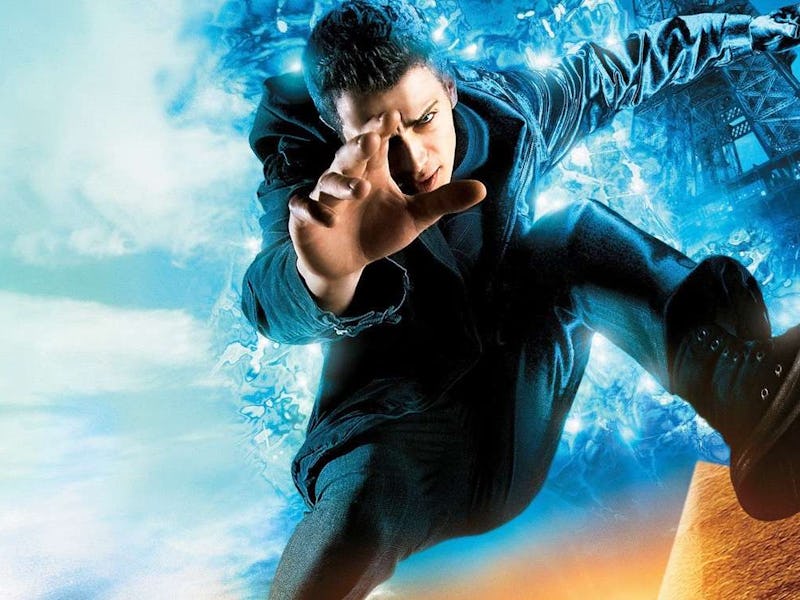Darth Vader Deserved Better Than This
After the Star Wars prequels, Hayden Christensen somehow made an even less coherent sci-fi movie.

“A totally ridiculous and incoherent sci-fi adventure,” the New York Post declared. “Redefines – downward – the notion of dreadful” remarked the Wall Street Journal. “So freakin’ awful,” Time magazine summarized succinctly. And these were some of the better reviews.
Throw in the fact Jumper immediately derailed an intended franchise, hammered the nail in the coffin of Hayden Christensen’s leading man career, and even caused its own director to have a crisis of confidence, and you can see why the loose adaptation of Steven Gould’s 1993 science fiction novel isn’t remembered particularly fondly.
Celebrating its 15th anniversary on February 14, Jumper might not be in the same ballpark as Doug Liman’s remarkable early run (Swingers, Go, The Bourne Identity) or even his patchy, tabloid-baiting predecessor Mr. and Mrs. Smith. But as a piece of pure mindless escapism, it’s far better than its reputation suggests.
Jumper stars Christensen as David Rice, a man who, while nearly drowning in a frozen river as a teenager, discovers he can teleport to anywhere he can envision. Instead of harnessing this remarkable superpower for the greater good, the bachelor spends his days robbing banks, extreme sightseeing (picnicking atop the head of the Sphinx, for example), and charming women from all corners of the globe into bed. He’s essentially living every immoral bro’s dream.
David’s carefree existence gets rudely disrupted one night, though, when he returns to his luxury penthouse to find a waiting intruder. Samuel L. Jackson’s bleach-haired Roland isn’t a cop as first suspected. Instead, he’s the head of the Paladins, a religious order who believe jumpers are an affront to mankind. “Only God should have the power to be all places at all times,” he espouses.
Samuel L. Jackson in bleach-haired, electrocuting mode.
Having spent eight years living it up without any consequences, David now finds himself running — and jumping, of course — for his life in a cat-and-mouse with a crazed, and ruthlessly efficient, marksman. Roland’s weapon of choice is a cable contraption which sends 1000 volts of electricity pulsing through his victim’s brains, something which David only just manages to evade during their ‘now you see him/now you don’t’ first encounter.
As proven with Jason Bourne’s pen versus knife battle, Liman knows how to stage a distinctive fight scene. In another brawl, David throws a punch in Japan and avoids the retaliation in the Big Apple. His ability to transport anything or anyone he touches also entertains: see how he bewilders his former school bully with a street altercation that immediately shifts to a locked bank vault. While Jumper does attempt a surface-level exploration of some weighty themes, it could never be accused of taking itself too seriously.
Of course, David only encounters his old nemesis while on the lookout for childhood sweetheart Millie (Rachel Bilson). Their subsequent romance is the part of the film which truly does jump off a cliff. Tom Sturridge and Teresa Palmer had initially been cast as the two lovers before producers decided they needed bigger and older names. Unfortunately, the star power Christensen gained during his much-maligned stint in the Star Wars franchise had significantly waned by the time Jumper hit cinemas, and he shares next-to-no chemistry with The O.C’s golden girl.
Rachel Bilson and Hayden Christensen displaying their sheer animal magnetism.
Still, their unconvincing love story does give the movie a chance to tick off another international location shoot. Remarkably, Jumper was shot across 20 different cities in 14 different countries, meaning it resembles a big-budget travelogue just as much as an action-heavy sci-fi. Rome’s Colosseum not only provides the backdrop for their first date but also helps introduce a far more charismatic teleporter, too.
Sporting a very mid-’00s emo haircut that desperately needs a trim and an English accent which jumps around as much as his body, renegade Griffin is the type of character you wish the movie had revolved around instead. Jamie Bell brings an energy its bland lead is sorely lacking, even when he’s required to do little more than offer obvious exposition dumps about the centuries-old conflict between jumpers and Paladins.
Bell also gets his fair share of action, including a dazzling sequence in which Griffin chases David through a kids’ swimming pool, the Arctic Ocean, and a battlefield in Chechnya after diving off the Empire State Building to retrieve a detonator intended to blow Roland to smithereens. Jumper's story might be filled with plot holes and lapses in logic. How are the Paladins so efficient at hunting their prey, for example? And how was David able to transport himself into an NYPD cell he’d never seen? However, you never have to wait too long to get distracted by an impressive set piece.
Jamie Bell as the jumper the film should have revolved around.
That’s a good job as the rest of the emotional beats don’t hit particularly hard, either. Oscar nominee Diane Lane is wasted as the Paladin mother who abandoned David from a young age once she realized he was on the opposing side (watch out for an even briefer cameo from a pre-Twilight Kristen Stewart as the jumper’s half-sister). Adding to the parental issues, Michael Rooker is given similarly short shrift, too, as the abusive father David runs away from the moment he discovers his powers.
Liman later expressed creative regrets over his sixth feature film, something he was allowed to compensate for more than a decade later with Impulse, a belated, and more socially-conscious, TV spin-off which centered on a teleporting teenage girl. But he needn’t have been so hard on himself. Sure, Jumper is by no means a lost classic. Yet few other CGI-heavy spectacles of its era are as efficient at leaping from A to B.
This article was originally published on